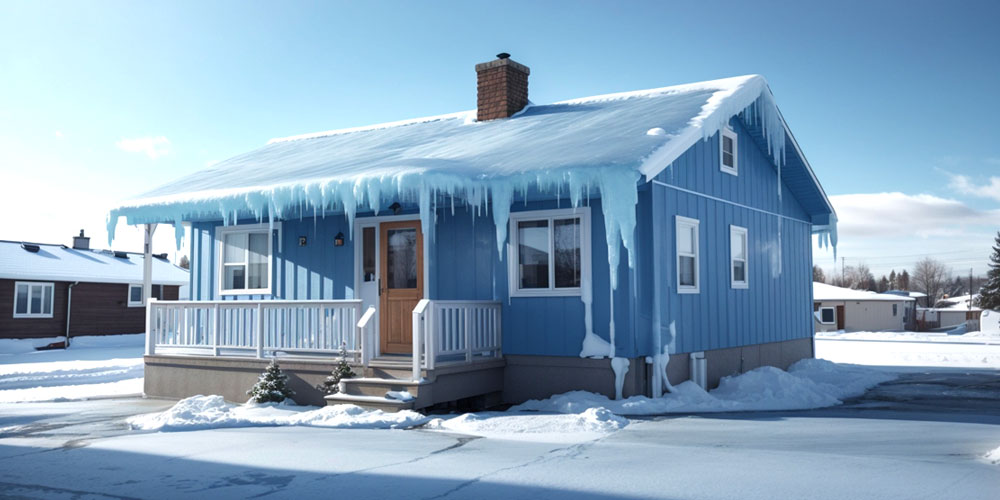How to Prevent Ice Dams on Your Roof


Ice dams on your roof?
Don't let them turn into the bane of your winter existence.
Winter wonderlands are great, but if you're not careful, the snow can lead to some unwelcome guests like ice dams.
In this article, we will unravel the mystery of ice dams and, more importantly, how to prevent them.
How Ice Dams on Roofs Form
First things first, let's talk about the elephant—or should I say, the glacier—in the room.
An ice dam forms when snow melts and runs down your roof, only to refreeze near the edges.
This usually happens around your gutter, where warm air from your home escapes and causes the snow to melt in the first place. Then, as it gets near the colder eave, it refreezes. Over time, the cycle continues, creating a larger and larger body of ice—or what we call an ice dam.
Ice Dam Prevention Through Air Sealing
To stop this icy menace, you need to get to the root cause.
One way to do that is through air sealing.
Air sealing your attic and around your roof is a critical step in ice dam prevention. This isn't just a winter thing; it's a year-round investment that also helps retain the heat in your home.
Think about it—you're paying good money to heat your home, right? So why let that warm air escape through nooks and crannies?
In your attic, particularly around the soffit area, there are multiple junctions. This leads to a labyrinth of small gaps where warm air can escape. If you're not a fan of wasting money (who is?), consider air sealing as your first line of defense against ice dams.
Adding Insulation to Retain Home's Heat
Once you've sealed up those air leaks, the next step is insulating your attic or roof deck.
Insulation acts as a barrier, retaining the heat inside your home. You've already paid for that warm, cozy air, so why not keep it where it belongs? Adequate insulation is especially crucial in winter when you want to prevent any water or snow on your roof from melting and forming ice dams.
If you're in the market for insulation, foam insulation offers a two-for-one deal. Not only does it provide the insulation you need to retain heat, but it also seals off air leaks. It's like buying a car that not only gets great mileage but also washes itself. Who wouldn't want that?
Using Heat Tape or Cable for Extra Precaution
Now, for the lesser-known method for preventing ice dams—heat tape or heat cable.
Imagine a cable strung along your roof, right above the gutter. This cable heats up and prevents any snow or water runoff from freezing and forming an ice dam. It's like having a little guardian angel that melts away potential trouble before it can even start.
While installing a heat cable does require maintenance and an initial investment, it could be a lifesaver for homes with large overhangs. A four-foot soffit, for example, could still develop ice dams despite top-notch air sealing and insulation. In such cases, a heat cable is a worthy alternative to consider.
Ice Dam Prevention for Your Home
There you have it—three tried-and-true methods to prevent ice dams on your roof.
From air sealing to insulation and even the use of heat cables, there are multiple ways to keep your home ice dam-free this winter. It's all about understanding your home's specific needs and taking proactive measures. And remember, a little prevention now can save you a lot of icy headaches later.
If you want to dig deeper into making your home more energy-efficient or comfortable, check out the wealth of information available at our Learning Center.
Related Articles
How to Stop Drafts from Around Windows
How to Keep Pipes from Freezing
About Eric Garcia
Eric brings his knowledge and training in building science, training in spray and injection foams from the manufacturers, more than eight years installing foam insulation, as well as selling and managing in the foam insulation industry. He is also BPI and Dale Carnegie certified and has taken several building science courses, including air sealing and building envelope. Eric is the Professor of Foam on our educational YouTube series Foam University. Even when Eric is off he is usually still “working” or thinking about work, but when he can get away he enjoys camping, hiking, hunting, and woodworking.



